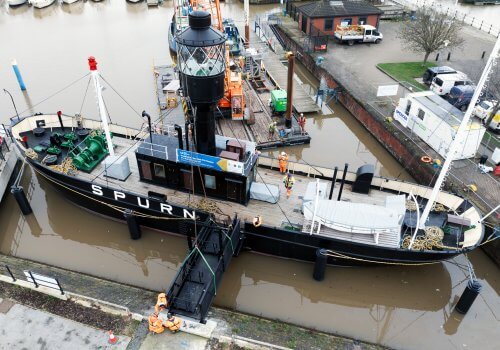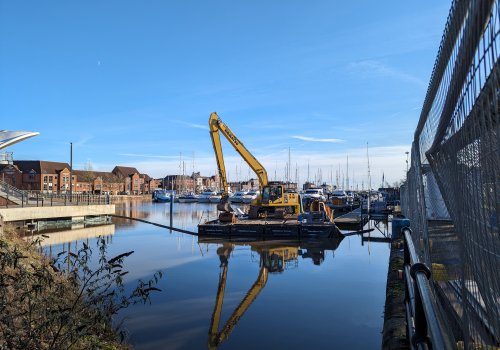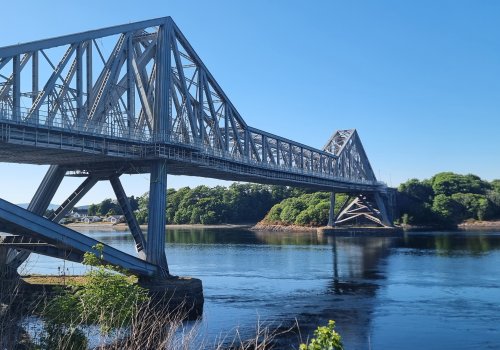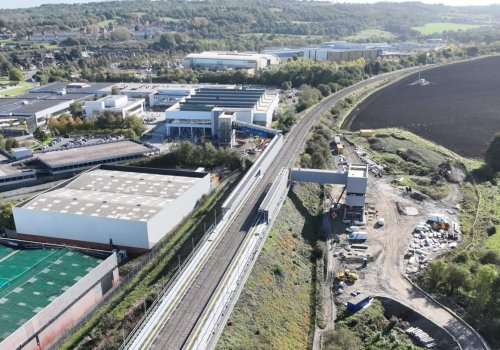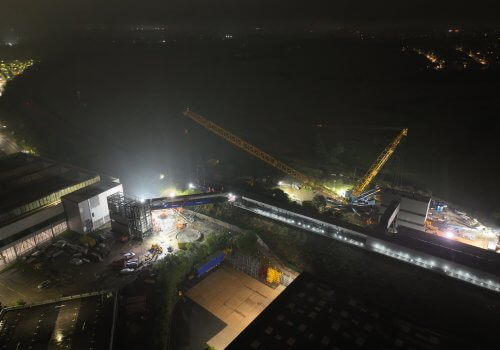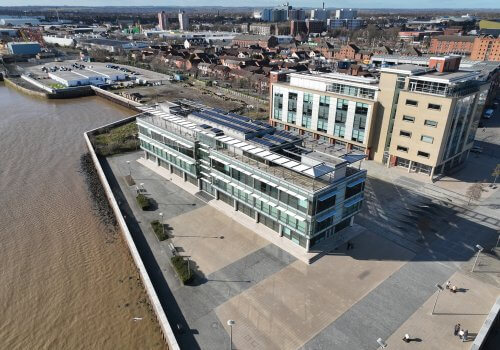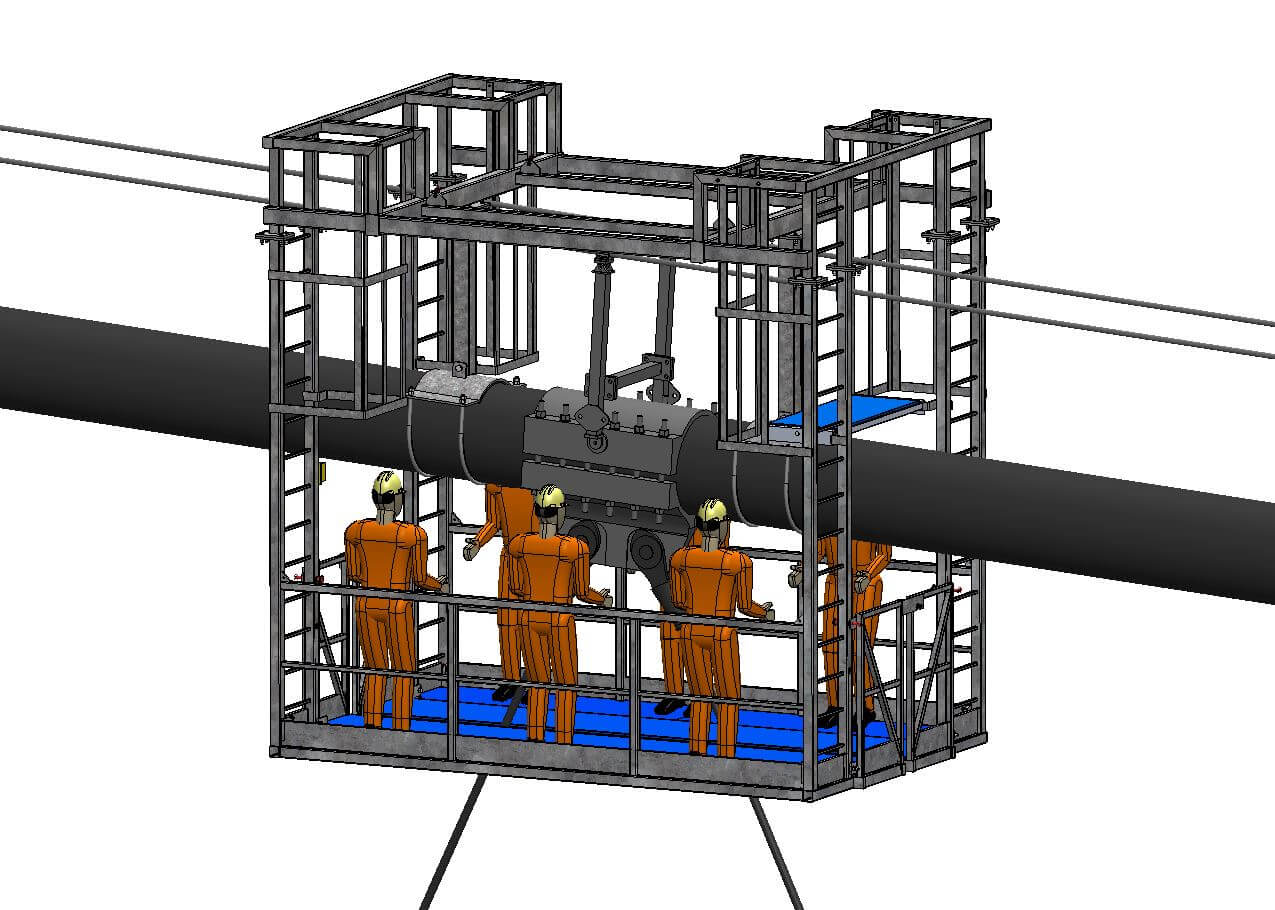
Hanger condition on the UK’s Humber Bridge will be investigated this summer through a specialist contract on the major crossing.
Three hangers are to be removed from one of Europe’s longest suspension bridges and tested to establish their remaining life. Work will take place over the summer and involves the installation of a purpose-built access gantry onto the main cable.
The Humber Bridge in the northeast of England is a grade 1 listed structure and a masterpiece of civil engineering — it is managed and maintained by the Humber Bridge Board. It was opened to traffi c 37 years ago, and investigations into the current condition of the existing hangers are necessary in order to establish the life expectancy of these structural elements. This work will allow HBB to determine what the current life-span of the existing suspenders is, and predict when intervention, in the form of replacement of all the hangers on the bridge, will be necessary. Spencer Group has been appointed as principal contractor, with Atkins providing commercial governance and design of the permanent works.
The bridge deck is suspended from the main bridge cables by wire rope suspenders, inclined at nominally 65° from the horizontal. The suspenders used on the Humber Bridge were originally manufactured from 62.3mm diameter spiral strand wire rope. Each rope is composed of 105 lengths of wire of 5mm diameter, five lengths of 4mm-diameter wire and one length of 2.5mm-diameter wire with the following distribution; the five outer layers are made of 5mm-diameter wire; 33 in the outer one, 27 in the second, 21 in the third, 15 in the fourth and nine in the fifth. The sixth layer contains the 4mm-diameter lengths and the smallest wire, 2.5mm diameter, is at the centre.
Fixed to each end of the wire rope suspenders by means of a hot metal poured socketing arrangement are cast steel sockets, complete with 100mm-diameter steel pins, which connect directly to the cable clamps wrapped around the main cable at the top of the suspender, and the deck stool at the bottom of the suspender.
The scope of the work involves taking down three existing hangers from the bridge and removing them from site for further inspection. Three semi-permanent replacement hangers will be supplied, tested and installed as part of the same contract.
Spencer Group will draw on its experience of working on existing bridge structures and will undertake all temporary works design, detailed planning, and specialist resourcing required for the works. A key challenge is to provide suitable temporary high-level access for engineers and specialist operatives to remove and replace the hangers as described above, specifically at the top pin location.
Due to the safety-critical nature of the access and the short duration of the works, Spencer Group has designed an innovative and economically advantageous temporary access platform using its in-house design team. The platform will be used to provide personnel access to the top pin on all three hangers.
The structure will be a static frame structure, nominally 2.5m long, 2.5m wide and 3.5m high, which will be craned into position on the main cable using a saddle arrangement. The bridge will be secured to the main cable and handstrand cables when the structure is installed.
The access platform will be a fabricated, welded and bolted structure. It will have two hinged flaps which will be put into position manually once the structure is installed on the cable, to cover the gap between the platform sides and provide a safe contained working environment for the operatives.
Another key challenge is tensioning and de-tensioning of the suspenders. To achieve this, Spencer has engaged consultant Cowi to detail its proven jacking system, which has previously been used both on the Severn Bridge and also on the Humber Bridge. This system creates a secondary load path from the socket into the deck stool, bypassing the pin to be removed or replaced.
To ensure the permanent structure is fully protected in this temporary condition, live loading will be carefully controlled. Tight controls will be placed upon jacking operations and displacement of the structure, and Spencer Group is to provide structural monitoring services before, during and after hanger replacement.
Once the existing hangers are safely removed from the bridge they will undergo destructive and non-destructive testing, which will be carried out away from the construction site under a controlled environment.
The key project outcome is to determine the residual life of the suspenders/hangers. To achieve this, various tests will be carried out, including but not limited to fatigue, ultimate tensile strength, visual examination, examination of fracture surface, individual wire tensile strengths, fracture toughness, chemical composition and remaining coating testing. Works to remove the hangers are due to take place on site this summer, with testing continuing into the autumn.
Source: Bridge design & engineering magazine | www.bridgeweb.com
